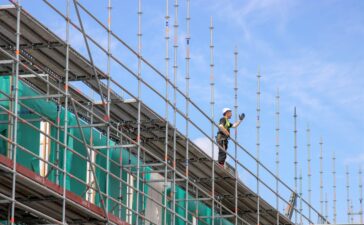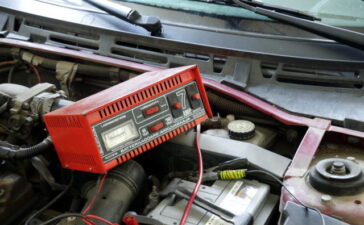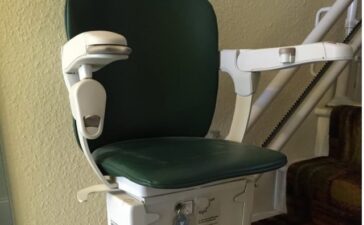Security cameras function as diligent protectors of our residences and commercial establishments, offering continuous vigilance even when our physical presence is absent. To guarantee the preservation of sharp and clear footage, it is imperative to prioritize regular maintenance. In this comprehensive guide, we will delve into the measures you can implement to uphold your security camera’s optimal performance while also addressing the common reasons for blurry security camera footage.
Understanding the Importance of Maintenance
Before diving into the practical aspects of camera maintenance, it’s essential to grasp why it matters. Just as with any piece of technology, security cameras are subject to wear and tear over time. Factors like weather conditions, dust, and even tampering can affect their performance. Maintenance helps in:
- Preserving Image Quality: Regular upkeep ensures that your security camera continues to capture clear and high-quality footage, allowing for better monitoring and analysis.
- Enhancing Reliability: A well-maintained camera is less likely to fail or experience glitches, providing consistent surveillance and peace of mind.
- Prolonging Lifespan: Proper care and maintenance can extend the lifespan of your security camera, ultimately saving you money on replacements.
Now, let’s explore the steps you can take to maintain your security camera effectively.
Cleaning Your Security Camera
One of the most straightforward yet crucial maintenance tasks is cleaning your security camera regularly. Dust, dirt, and debris can accumulate on the lens, affecting image clarity. Here’s how to do it:
- Power Off: Before cleaning, turn off the camera to prevent any potential damage or electrical hazards.
- Gentle Cleaning: Use a microfiber cloth or lens cleaning solution designed for camera lenses. Keep away from anything abrasive that might scratch the lens.
- Avoiding Aerosols: Refrain from using aerosol sprays directly on the camera, as they can seep inside and cause damage.
- Dust Prevention: Consider installing camera enclosures or housings to shield the camera from dust and debris.
Checking Camera Position and Focus
The positioning and focus of your security camera are critical for capturing clear footage. Check them frequently and make necessary adjustments:
- Positioning: Ensure that the camera is correctly positioned to cover the intended area without obstructions or glare.
- Focus Adjustment: If your camera has adjustable focus, use it to sharpen the image. Follow the manufacturer’s instructions for fine-tuning the focus.
- Tamper Checks: Periodically inspect the camera’s mount and housing for any signs of tampering or vandalism.
Verifying Cabling and Connections
Loose or damaged cables and connections can result in connectivity issues and blurry footage. Check the cables and connections regularly:
- Cable Inspection: Thoroughly inspecting power and data cables for any visible damage, such as fraying or exposed wires, is critical to ensure a stable and reliable connection for your security camera. Identifying and addressing cable issues promptly helps prevent connectivity problems that can lead to downtime and blurry footage.
- Connection Tightening: Ensure that all cable connections are securely fastened to the camera and the recording or monitoring equipment.
- Weatherproofing: If your camera is outdoors, confirm that weatherproof seals and grommets are intact to prevent moisture and dust from affecting the connections.
Updating Firmware and Software
Manufacturers often release firmware and software updates to enhance camera performance and security. Keep your camera’s firmware and associated software up to date:
- Manufacturer’s Website: Visit the camera manufacturer’s website to check for available updates for your camera model.
- Follow Instructions: Follow the manufacturer’s instructions for downloading and installing updates, ensuring compatibility with your camera and recording equipment.
- Regular Checks: Establishing a routine of regularly checking for firmware and software updates is essential to keep your security camera system up to date. Promptly installing these updates enhances camera performance, adds new features, and improves security, ensuring your system remains effective and reliable.
Monitoring Camera Storage
Your security camera’s storage is where all the footage is stored for later review. Regularly monitoring and managing storage is essential:
- Storage Capacity: Ensure that your camera’s storage capacity is sufficient for your needs. Consider upgrading if necessary.
- Footage Retrieval: Periodically review and archive stored footage to prevent storage from becoming full and overwriting important recordings.
Professional Inspections
While regular maintenance can address most issues, professional inspections are recommended periodically, especially for more complex camera systems or commercial setups. Professionals can:
- Thoroughly Inspect: Conduct comprehensive assessments of camera systems, identifying any issues that might not be apparent during routine checks.
- Clean and Calibrate: Performing in-depth cleaning and calibration procedures on your security camera is essential to ensure its optimal performance.
- Repair or Replace: Addressing hardware issues during a professional inspection is crucial to maintain your security camera’s long-term functionality. If necessary, professionals can recommend and execute repairs or replacements, ensuring that your camera operates at its best capacity.
Final Thoughts
Maintaining your security camera is essential for ensuring that it continues to perform optimally. By following these maintenance guidelines, you can preserve image quality, enhance reliability, and extend the lifespan of your security camera system. Remember that a well-maintained camera provides you with the peace of mind that comes with knowing you have a reliable surveillance system in place.







